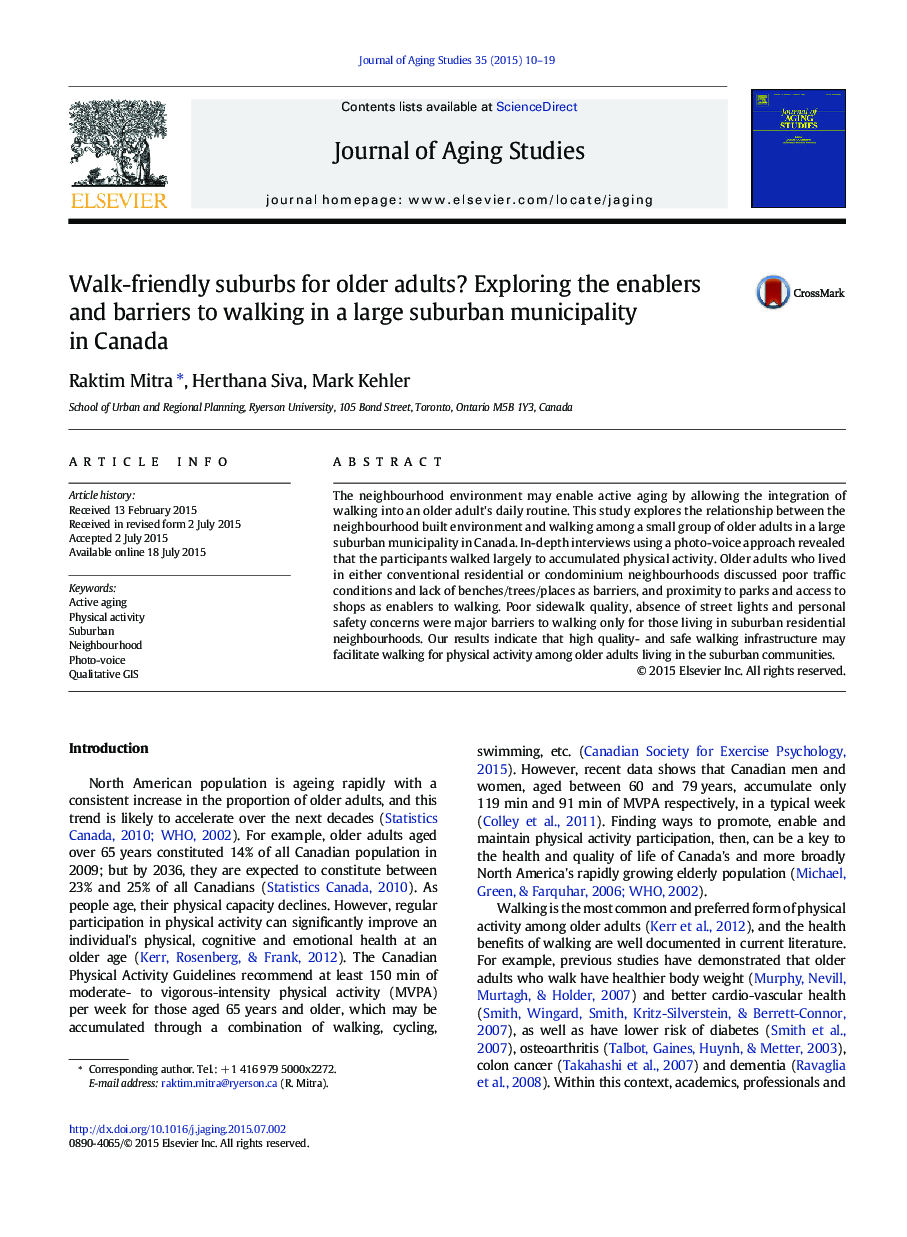| Article ID | Journal | Published Year | Pages | File Type |
|---|---|---|---|---|
| 7517543 | Journal of Aging Studies | 2015 | 10 Pages |
Abstract
The neighbourhood environment may enable active aging by allowing the integration of walking into an older adult's daily routine. This study explores the relationship between the neighbourhood built environment and walking among a small group of older adults in a large suburban municipality in Canada. In-depth interviews using a photo-voice approach revealed that the participants walked largely to accumulated physical activity. Older adults who lived in either conventional residential or condominium neighbourhoods discussed poor traffic conditions and lack of benches/trees/places as barriers, and proximity to parks and access to shops as enablers to walking. Poor sidewalk quality, absence of street lights and personal safety concerns were major barriers to walking only for those living in suburban residential neighbourhoods. Our results indicate that high quality- and safe walking infrastructure may facilitate walking for physical activity among older adults living in the suburban communities.
Related Topics
Health Sciences
Medicine and Dentistry
Geriatrics and Gerontology
Authors
Raktim Mitra, Herthana Siva, Mark Kehler,
